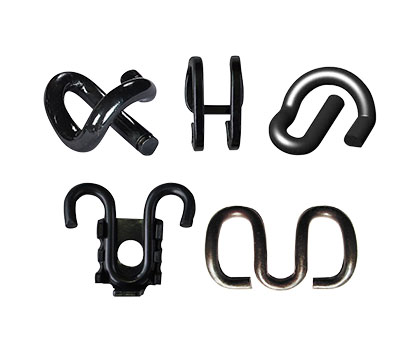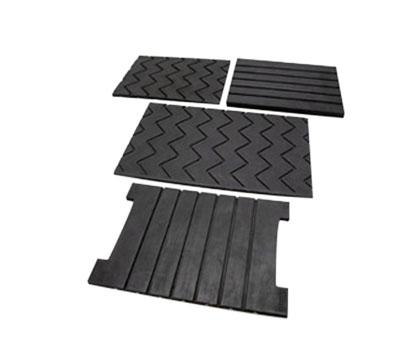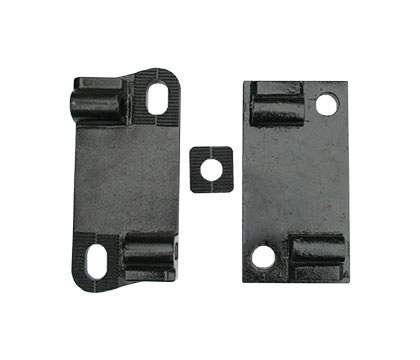Rail passenger line is inevitable to use long continuous beam, if the large resistance fasteners are used on the bridge, a large number of rail overlapping devices will have to be set. How to deal with this situation? People has successfully created out special clip for bridge, that is, small resistance fastener.

1. Current situation of foreign countries
A. Japan
The small resistance fasteners are adopted on non-ballasted track of Japanese Shinkansen bridges. The line resistance is 5kn/m/rail, the corresponding small resistance fasteners get enough clamping force through blade (or elastic clip), or achieve the function of small longitudinal resistance using composite pad of stainless steel.
B. Germany
From July, 1982 to June, 1991, German has built up high-speed railways from Hanover to Wurzburg, Mannheim to Stuttgart and Cologne to Frankfurt (the first period project). Of the three high-speed railways, bridges are not much in total line length, respectively 8%, 6.5% and 2.7%, with 25m, 44m and 58m simply supported beam and hollow pier.
During this period, the Federal Republic of Germany Railway Administration promulgated DS899/59 Special Rules of New Trunk Railway Bridge (BesB). The Rules clearly defines: for more than 4 holes bridge with 30m largest single span length, in the premise of longitudinal stiffness of pier K≥1000kn, its unloading resistance is 30kn/m/line, loading resistance is 60kn/m/line, that is, for single rail, unloading resistance is15kn/m, loading resistance is 30kn/m.
In August, 2002, the third phase of high-speed railway from Cologne to Rhein/Main opened in Germany, which had 18 valley bridges. The longest bridge was 992m long; the longest span of bridge on Main River 130m. Because of CWR design on the bridge, the large resistance fastener faced the use on a dilemma, which was forced to take the measures to reduce the fastener resistance. In recent years, Germany's enterprises and research institutes are also focused on development of the small resistance fastener used on bridge. Now German Vossloh Company has created out rail fastening system with small resistance fasteners. When installing, this type of clips are with special labels. Opened in 2006, the Nuremberg—Ingolstadt high-speed railway has adopted the small resistance fasteners on the bridges actually, which longitudinal resistance of track at each clip is 6-7kN.
C. China
From the beginning of 1960s, China began to research CWR design for the bridge. In 1970s, matched fasteners began to use on the track. The resistance value was approximately 6.0 to 8.0kN. So rail fasteners that its relative resistance exceeds 9kN are named small resistance fasteners in China. At present small resistance fasteners are popularly used on railway bridges or both ballasted and non-ballasted tracks.
The use of small resistance fastener on the bridge has formed common understanding; the use of small resistance fastener is to avoid the use of rail overlapping device, the it is the most effective measures to reduce stress of bridge and CWR.

2. Performance requirements for small resistance fasteners
Except the requirements of keeping gauge distance, preventing rail overturning under dynamic action of wheel and providing sufficient insulated performance, small resistance fasteners on CWR for passenger railway must meet the requirements of the following properties:
- A. To adjust the longitudinal resistance according to design requirements of bridges on CWR.
- B. To ensure that the track has enough anti-creeping ability.
- C. To ensure the stability of the track.




